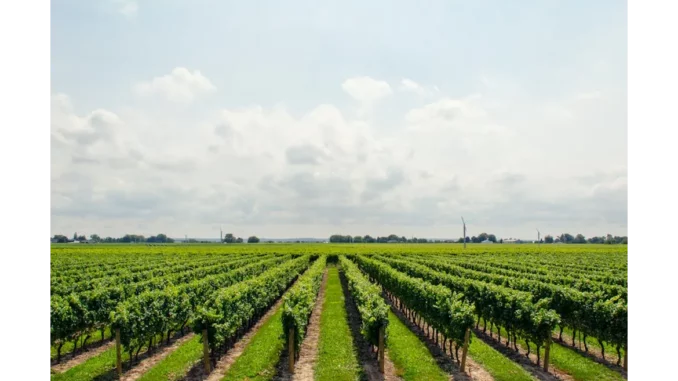
Navigating the World of Wine Investment: A Beginner’s Guide
Wine collecting is a pursuit steeped in history, elegance, and the potential for lucrative returns. With its rich narrative, vintages, and tiered values, the world of rare wines presents an enticing opportunity for both enthusiasts and investors. If you are ready to embark on this fascinating journey, here are key insights and expert advice to help you navigate the intricate realm of wine investment.
The Allure of High-Value Wines
In 2010, the auction of three bottles of 1869 Chateau Lafite-Rothschild for an astounding $230,000 each captured global attention. Similarly, in 2011, the sale of two bottles of champagne, salvaged from a 170-year-old shipwreck, for $78,400 each, highlighted the remarkable value rare wines can command. These extraordinary prices are driven not just by rarity, but by the compelling stories and meticulous documentation that accompany these bottles. The charm of wine collecting lies in this confluence of rarity, history, and provenance.
10 Essential Tips for Starting Your Wine Collection
1. Have Disposable Income
Investing in high-value wines necessitates a significant financial outlay. Beyond the initial purchase price, consider the costs of proper storage, comprehensive insurance, meticulous documentation, and stringent security measures.
2. Keep Track of Your Collection
Maintain an organised inventory of your wines. Detailed tasting notes and thorough documentation of consumed bottles will help you manage and appraise your collection effectively.
3. Invest in Proper Storage
Wines must be stored in a cool, humid environment (13°C, 75% relative humidity) to preserve their quality. Consider investing in a dedicated wine cellar or a reputable storage facility to meet these exacting conditions.
4. Initial Value Matters
Begin with wines that already hold significant value and demand. These selections are more likely to appreciate over time, making them sound investments.
5. Save All Documentation
Preserve all purchase receipts, auction catalogues, and related documentation. These records are crucial for verifying the provenance and value of your collection.
6. Routinely Appraise Your Collection
The value of wines can fluctuate; hence, regular appraisals are essential. This practice also ensures your collection is adequately insured.
7. Handle Your Wines Carefully
Minimise handling to avoid unnecessary disturbances. Allow newly acquired old wines to rest for 4-6 weeks before considering consumption.
8. Be Wary of Deals That Seem Too Good to Be True
Wine is a prime target for counterfeiting. Always verify the authenticity of a wine before committing to a purchase.
9. Start Small
Initiate your collection through local auctions, wine collector groups, and knowledgeable individuals. There’s no need to plunge into high-end auctions immediately.
10. Focus on What You Like
While market trends can inform your investments, your collection should predominantly reflect your personal tastes and preferences.
Expert Insights: Advanced Strategies for Building a Valuable Collection
Start with a Clear Vision
Define your collection goals—whether they are investment-oriented, for personal enjoyment, or both. Identifying your preferences for regions, varietals, and vintages will guide your purchasing decisions and ensure your collection reflects your unique interests.
Educate Yourself
Invest time in learning about different wine regions, grape varieties, winemaking techniques, and the factors influencing a wine’s quality and value. Online resources, books, and wine courses are invaluable tools for building your knowledge base.
Diversify Your Collection
A diverse collection mitigates risks and enhances your tasting experience. Include wines from varied regions, grape varieties, and vintages, and consider both established and emerging wine regions, as well as renowned and up-and-coming producers.
Invest in Blue-Chip Wines
Focusing on blue-chip wines—those with a proven track record of appreciation—can provide stability and potential returns. Bordeaux, Burgundy, and top-tier wines from California, Italy, and Champagne are particularly noteworthy.
Buy En Primeur
Purchasing wines en primeur, or as futures, allows you to secure limited-production wines at pre-release prices, often at a significant discount. This strategy can provide access to highly sought-after wines before they reach the broader market.
Practice Patience and Discipline
Building a valuable wine collection requires patience and discipline. Resist the urge to consume wines prematurely and allow them to age gracefully. Maintain detailed records and develop a rotation system to enjoy wines at their peak.
Wine collecting is an art form that combines passion, knowledge, and dedication. By adhering to these tips and strategies, you can cultivate a collection that not only brings joy and appreciation but also holds the potential for substantial financial returns. Whether you are a connoisseur, an investor, or an enthusiast, the journey of wine collection offers a rich tapestry of experiences that connect you to the timeless allure of the vine.


Be the first to comment